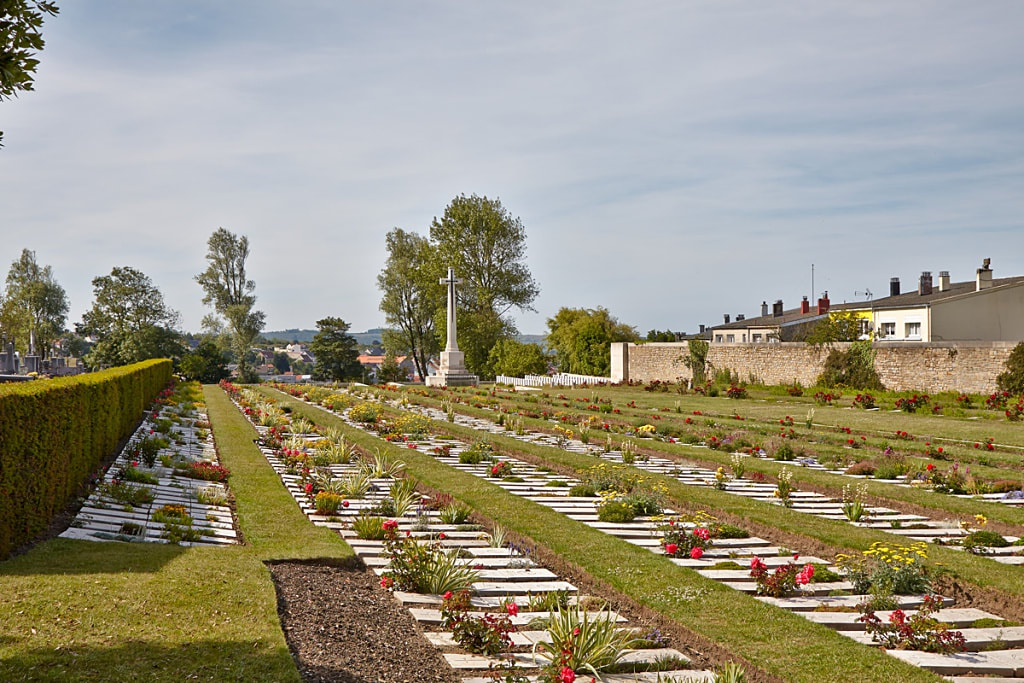Jack Moore
Date of birth: 1895
Date of death: 07.10.1916
Area: Outwood, Wakefield
Regiment: King’s Own Yorkshire Light Infantry
Family information: Son of Albert Henry and Eliza Moore, nee Hinchcliffe
Rank: Private
Service number: 12/1450
War Service
Jack Moore was employed at Parkhill Colliery when, on 10th May 1915, he enlisted in the King’s Own Yorkshire Light Infantry. He was posted to the 12th Battalion, which was based at Burton Leonard near Ripon and formed part of the 31st Division. The 12th KOYLI was a pioneer battalion, whose role was similar to that of a front line infantryman. However they were also charged with other duties, such as trench digging, installation of barbed wire and moving supplies. The pioneers were equipped as assault troops, but in addition, also carried a pick, shovel and 50 rounds less ammunition.
After completion of their training on Salisbury Plain, the 12th KOYLI sailed to Egypt, landing on 22nd December 1915. The 31st Division was deployed to defend the Suez Canal until March 1916, when they sailed to France, landing at Marseilles.
On 1st July 1916, the opening day of the Battle of the Somme, the 31st Division was on the extreme left of the British attack and charged with capturing the village of Serre. The British bombardment of the enemy trenches began a week before the assault. During this time, 5 saps were dug at intervals along the divisional front, to within 40 yards of the enemy front line. These saps were to be opened up one hour before the planned attack.
The plan was for “B” and “C” Coys. of 12th KOYLI to start constructing communication trenches from the saps to the captured German lines as soon as the assault infantry was through the first objective. The other Battalion Companies, “A” and “D” Coys. were allocated to 94th and 93rd Brigade and charged with establishing strong points at selected positions in the captured German trenches.
The 31st Division attack failed and the platoons from “A” Coy and “D” Coy, following the assault troops into attack, suffered many casualties from enemy artillery and machine gun fire. In the hours that followed the attack, the 12th KOYLI was engaged in rebuilding trenches destroyed by enemy artillery fire, supplying ammunition and later, helping to recover the wounded. On the 2nd July the battalion was in reserve and one week later they were in billets at Mallinghem.
For the next four months the 12th KOYLI worked under the direction of the Royal Engineers. This work included unloading coal barges, digging drainage systems in the forward area, making tramways, tunnelling and building strong points.
On the 21st September 1916 Private Jack Moore was severely wounded by a sniper. He broke his leg and also lost a lot of blood. He was taken to hospital in Boulogne, which was one of three base ports used by the army throughout the war. However the injuries sustained by Jack Moore failed to respond to treatment and his leg had to be amputated. He was already very weak from loss of blood and on the 7th October he died. He was buried in Boulogne Eastern Cemetery, which lies in the District of St Martin Boulogne, just beyond the eastern corner of the Citadel (Haute-Ville).
The cemetery is a large civil cemetery and the Commonwealth plot, which contains 5,577 burials from the First World War, is located on the western edge of the southern section.
Family Life
Jack Moore was born on 31st October 1895, the son of Albert Henry Moore and his wife Eliza, formerly Hinchcliffe. His father was a coal miner and the family lived at Hatfield Row, Outwood. On 1st December 1895 Jack Moore was baptised at St Mary Magdalene Church, Outwood. For most of his life Jack Moore lived with his grandparents, John and Sarah Ann Hinchcliffe, at 10, Hatfield Row, Outwood. He was at the home of his grandparents on census night of March 1901, with his parents living in a neighbouring house, his mother having just given birth to Mark, her third son. On leaving school Jack obtained work at a local colliery, where he was employed as a hurrier, working underground.
 Boulogne Eastern Cemetery
Boulogne Eastern Cemetery

